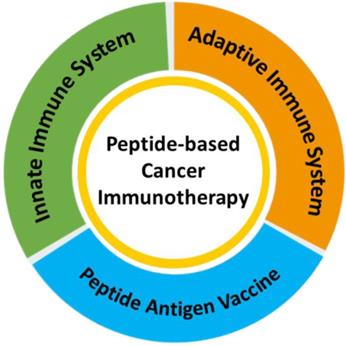
The field of ophthalmology has undergone significant transformation. Advancements in technology have revolutionized how eye care professionals diagnose, treat, and manage various eye conditions. From innovative surgical techniques to cutting-edge diagnostic tools, these developments are enhancing patient outcomes and making eye care more efficient. One notable advancement is the introduction of the EVO Visian ICL in TX, a state-of-the-art solution for vision correction that has garnered attention for its effectiveness and safety.
The Rise of Laser Technology
Laser technology has become a cornerstone in modern ophthalmology. Procedures like LASIK and PRK have changed how refractive errors are treated. These methods use precise laser systems to reshape the cornea, allowing patients to reduce or eliminate their dependence on glasses and contact lenses.
The latest generation of laser systems, such as femtosecond lasers, offers greater accuracy and reduced recovery times. These lasers create precise corneal flaps, enhancing the safety and effectiveness of the procedures. As a result, patients experience less discomfort and a faster return to normal activities.
Advanced Diagnostic Tools
Accurate diagnosis is crucial for effective treatment. Recent advancements in diagnostic tools have improved the ability of ophthalmologists to detect eye diseases at earlier stages. Devices like optical coherence tomography (OCT) provide high-resolution images of the retina and optic nerve. This non-invasive imaging technology allows for the early detection of conditions such as glaucoma, diabetic retinopathy, and macular degeneration.
Another innovative tool is the autorefractor, which measures how light changes as it enters the eye. This technology streamlines the process of determining a patient’s prescription, making eye exams faster and more accurate.
Telemedicine in Eye Care
Telemedicine has become increasingly relevant, especially in the wake of the COVID-19 pandemic. Patients can now consult with eye care professionals from the comfort of their homes. This approach is particularly beneficial for those living in remote areas or for individuals with mobility challenges.
Through telemedicine, patients can receive initial consultations, follow-up care, and even some forms of treatment. For instance, eye care professionals can assess minor issues through video consultations and determine if an in-person visit is necessary. This not only enhances access to care but also reduces the burden on healthcare facilities.
Innovative Treatments for Cataracts
Cataract surgery is one of the most common procedures performed worldwide. Technological advancements have made this surgery safer and more effective than ever. Traditional cataract surgery involves the use of manual techniques, but modern procedures often utilize phacoemulsification. In phacoemulsification, ultrasound waves break up the cloudy lens, which is then removed through a small incision. Newer intraocular lenses (IOLs) are designed to improve vision outcomes. Premium IOLs, such as
multifocal and toric lenses, allow patients to see clearly at multiple distances, reducing their reliance on glasses post-surgery.
One of the latest innovations in IOL technology is the Light Adjustable Lens (LAL). Unlike traditional IOLs, these lenses can be customized after surgery using UV light to fine-tune vision based on a patient’s needs. This cutting-edge technology provides greater flexibility and precision in achieving optimal visual clarity. To better understand how the light adjustable lenses work, patients can explore various different resources which offers in-depth insights into the benefits and process of this advanced lens technology.
Additionally, femtosecond lasers are now being used in cataract surgery to create precise incisions and fragment the lens. This minimally invasive approach offers faster recovery times and improved
safety.By choosing the best cataract surgery lens implant, patients can enjoy personalized solutions tailored to their vision needs, making cataract surgery a transformative experience.
The Role of Artificial Intelligence
Artificial Intelligence (AI) is making significant strides in ophthalmology. AI algorithms can analyze vast amounts of data quickly and accurately, assisting eye care professionals in diagnosing conditions and developing treatment plans. Machine learning models have been developed to detect diabetic retinopathy and age-related macular degeneration with high sensitivity and specificity.
AI can also enhance surgical precision. For example, AI-guided systems can assist surgeons in navigating complex anatomical structures during procedures, leading to better outcomes and fewer complications.
Customization of Treatments
Every patient’s eyes are unique, and technology allows for more personalized treatment options. For refractive surgeries like LASIK, wavefront technology measures how light travels through the eye, enabling the creation of a customized surgical plan. This personalized approach improves visual outcomes and reduces the risk of side effects such as glare and halos.
Similarly, the EVO Visian ICL provides a customizable solution for patients with high refractive errors. Unlike traditional contact lenses, the ICL is surgically implanted in the eye, offering excellent vision correction without the need for corneal reshaping. This option is particularly beneficial for those with thin corneas or other contraindications for LASIK.
Advances in Contact Lenses
Contact lens technology has also seen remarkable improvements. New materials and designs have enhanced comfort and vision quality. For instance, daily disposable lenses have gained popularity, allowing for convenience and hygiene.
Additionally, specialized lenses are available for patients with specific needs. Scleral lenses, for example, are larger than traditional lenses and can correct vision in patients with irregular corneas. They create a smooth surface over the eye, improving vision and comfort.
Robotic Surgery
The introduction of robotic systems in ophthalmology is another game-changer. Robotic-assisted surgery offers unprecedented precision and control, minimizing the risk of human error. Surgeons can perform intricate procedures with enhanced stability and accuracy.
For instance, robotic systems can be used in retinal surgery, where precise movements are critical. These systems allow for finer manipulation of instruments, leading to better outcomes in complex cases.
The Future of Gene Therapy
Gene therapy is emerging as a promising frontier in eye care. Researchers are exploring ways to treat genetic eye disorders by delivering healthy genes to affected cells. This approach could potentially cure conditions like retinitis pigmentosa and Leber congenital amaurosis.
Clinical trials are underway to evaluate the safety and effectiveness of these therapies. As technology advances, the hope is to provide long-lasting solutions for patients with inherited retinal diseases.
Patient Education and Engagement
Technology is also enhancing patient education and engagement in eye care. Virtual reality (VR) and augmented reality (AR) tools are being used to help patients understand their conditions and treatment options. These interactive platforms can simplify complex medical information, making it more accessible.
Furthermore, online resources and apps allow patients to track their eye health and stay informed about appointments and medications. This empowerment leads to better adherence to treatment plans and improved outcomes.
Conclusion
The advancements in technology are transforming the field of ophthalmology, improving how eye care is delivered and experienced. From innovative surgical techniques like the EVO Visian ICL in TX to the integration of AI and telemedicine, these developments are enhancing patient care. As technology continues to evolve, the future of eye care holds even more promise, offering hope for better vision and overall eye health for patients around the world.
With ongoing research and investment in ophthalmic technology, we can anticipate even more groundbreaking innovations that will further improve the quality of life for those with vision impairments. As we embrace these changes, both eye care professionals and patients stand to benefit immensely from the exciting advancements that lie ahead.
Write and Win: Participate in Creative writing Contest & International Essay Contest and win fabulous prizes.


